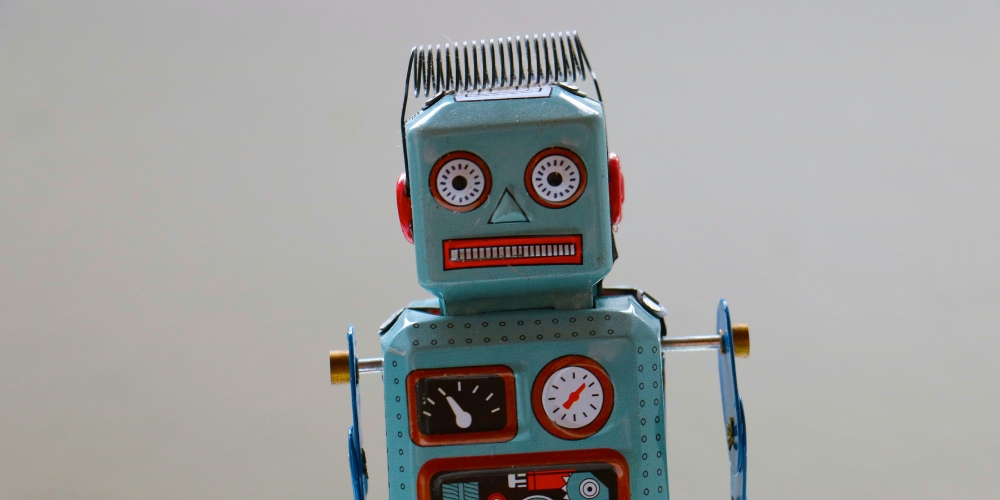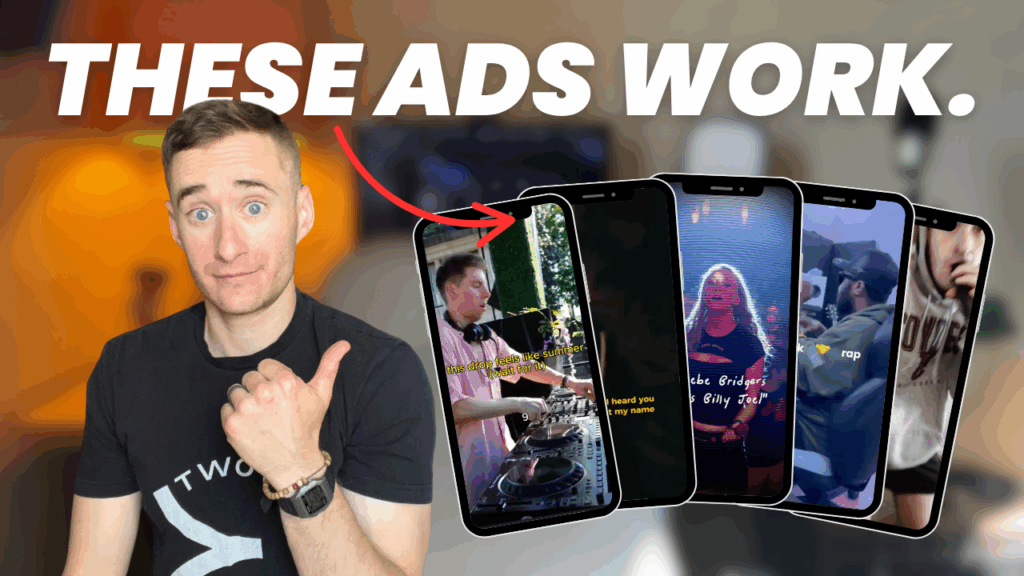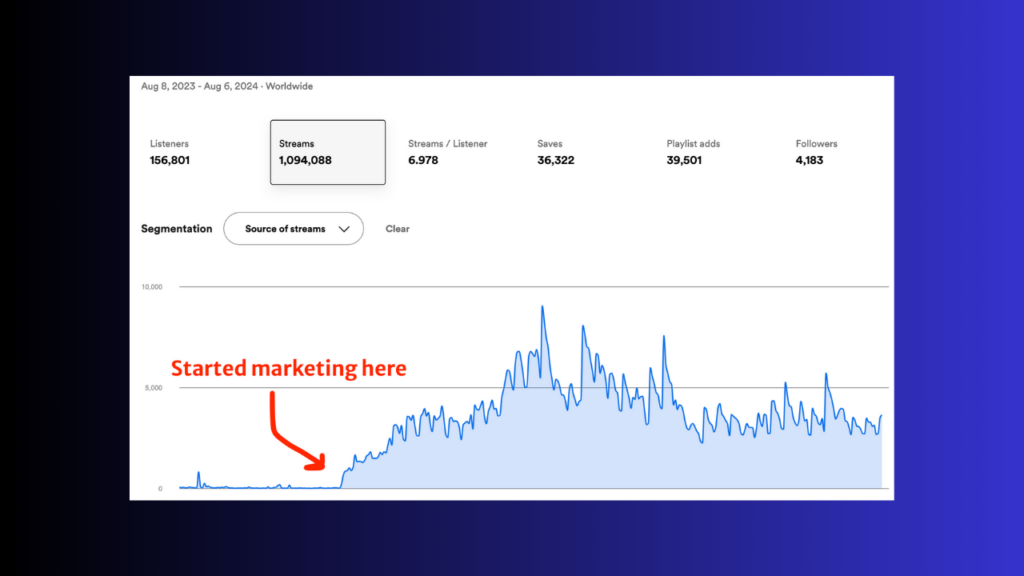Here’s my hot take for today:
It is a bad thing to use AI to make music.
I’m preaching to the choir, probably. You’re nodding your head right now: “Yes, it is a bad thing. Music was so much better when it was made by humans, hand-stitched note by note like my gran’s afghan.”
Well, yes.
Judging by Rick Beato videos and various online comment sections, it seems many people have a vague, intuitive sense that summoning music from an algorithm is not as good as summoning it with your body.
In today’s email, I’d like to flesh out why I think this is true.
The argument for using AI to make music, as I understand it, boils down to one thing:
Convenience.
Folks who are in favor of AI-assisted music typically represent this feature in one of a few ways:
AI makes music creation more accessible. In other words, people who could not previously create music now can. Let’s say, for instance, that you’re a great songwriter, but you sing like a tone-deaf Kermit the Frog.
Not to worry! You can now use AI-generated vocal tracks to sound just like Freddie Mercury or Adele.
This, say some people, is good.
AI makes music creation easier and faster. I keep getting served this ad where a girl explains how she wrote the first verse to a song, only to hit writer’s block with the second verse.
Not to worry! She fed what she had into Suno (the king of AI music platforms at the moment), and it spit out not only a second verse but a bridge, too, all of it produced to sound – wonder of wonders! – like a perfect cardboard replica of your least-favorite song by FINNEAS.
This, say some people, is good.
And most people in favor of AI music stop here.
(A small minority go on to argue that more convenience leads to more creativity; for reasons you’ll find below, I think this is a difficult claim to make.)
But I think all of these arguments misunderstand what music is for.
If, as Tolstoy thought, the point of art is the communication of genuine emotion, then it’s hard to argue for the value of AI-generated art at all.
As listeners, we delight in the smug turn of a Taylor Swift lyric or the anthemic high of a Coldplay chorus because we believe we’re wired into real feelings from real people. It’s a punch in the gut to realize that you’ve bought into a fake feeling: like finding you’ve wept with someone who was only pretending to cry, or discovering that your favorite song was only ever a parody.
When the music is manufactured, the joke is on the listener.
If art is for relationship, who cares about convenience?
Yes, everyone should be able to make music. But everyone should not be able to make music like everyone else.
We have this cultural illusion that creativity is the absence of limits. Really things work the other way around. Art is the examination of limits, which is another way of saying that limits are what make creativity possible.
To put it practically: If Leonard Cohen could sing like Freddie Mercury, “Hallelujah” wouldn’t exist.
And making music creation easier and faster is only good if music should be easy and fast to make. But why should it be? Music isn’t water; we don’t have a scarcity problem. With 100,000 songs uploaded to Spotify every day, it’s safe to say the problem is in the other direction.
To overvalue convenience is to miss what music is for.
The process is the point.
The joy of a jigsaw puzzle isn’t the picture on the box. It’s doing the puzzle.
I remember reading an afterword from Robin Hobb, author of The Farseer Trilogy, in which she reflects on one of her central characters, the Fool.
The Fool is fascinating, the sort of character that makes a series. And yet, to hear Hobb tell it, he wasn’t created to make the series at all. Actually, she’d planned him as a throwaway side character. Fortunately, he had other plans for himself. He kept saying and doing interesting things until eventually he was alive, and with him the rest of the book.
This is so often how good art happens: It lives into itself. The wrong note leads to the right riff.
AI-assisted art is wonderfully convenient and magically fast. Hallelujah! No need for messy feelings. We’ve conquered creative output, finally severing it from the slow, painstaking process of making art.
But what if the slow, painstaking process is the art?
– Jon










4 Responses
Hi
I’m afraid that you fall into the usual trap of thinking of ai music in a completely binary fashion.
It’s either the blood, sweat and tears of a human musician, or it’s push a penny in the slot of a computer and ta-da! it spits out a fully formed track.
The real value of ai in music lies somewhere more complicated in the middle.
It’s a tool which, if used as a building block, enables you to piece together your own lyrics and melodies with any one of thousands of alternatives for style, tempo, beats, instruments, etc etc.
Sure, you can lazily ask ai to to give you a complete track but, aside from the production values, what you’ll get is banal rubbish.
In the same way you could give a chimpanzee an acoustic guitar and ask it to make a noise.
Every time, without exception, there is a technological development, there are those who instinctively hate it. CD’s? “Pah! Never catch on!” DAW’s? “Can’t compete with being in a studio”.
Remember the early Queen albums? “No synths were used…” etc.
The same baseline equation works in ai as it does in physical composition:
the more work you put in, the better the results that come out.
Thanks for reading, Mark!
From what I understand, you’re arguing that 1) AI can be used to varying degrees of effectiveness, the success of which is largely determined by effort, 2) technology in art (including AI) is mainly a means of improving processes, and 3) in that way, every tech development (again, including AI) is categorically the same.
Correct me if I’m misunderstanding you on any of those points!
I’d agree with your first point – AI can certainly be used well or poorly, and the level of effort you put in obviously impacts the quality of the results it puts out.
I mostly agree with your second point – that tech (CDs, DAWs, synths) is often meant to improve the process of creation or distribution. But I also think that 1) tech is developed where people will pay for it, and 2) people are more inclined to pay for what is convenient than what is inherently good. So I think it’s certainly possible for tech to become popular without being beneficial.
And I fully disagree with your third point – that all tech progress is categorically the same. To give an example in another art form: You can use technology to improve pottery (i.e., you can develop mechanical throwing wheels, or new techniques for storing clay). But if you get rid of the wheel and the clay entirely, most people would agree that you’ve stopped doing pottery and are now doing something else.
There are points at which the change is no longer a continuation of a process, but something categorically different. There is a temperature at which water boils. If you’re hiking Half Dome in Yosemite, each step is just like the last – but eventually there’s a step that takes you off the edge of the cliff.
Hi Jon
I wouldn’t argue that tech developments are essentially the same, although I would observe that, depressingly, the reactions to them often are. I have a feeling that age is often an issue, although not neccessarily a defining one. Technological developments are both inevitable and unavoidable; how we integrate them or, alternatively, decry them is a matter of personal choice. But they will still keep on coming all the same!
Enjoy your blog, by the way. Thank you.
Age (or ignorance), is not the only reason to be hesitant about the widespread adoption of generative AI – and I say this as a 30-something who did her thesis in machine learning. To imply that thinking critically about adopting new technologies, processes, and ideas is “being old” is just… Well. Some of the most technologically minded people I know are older, lets just say that.
Not all change is inevitable. Ten years ago we thought bitcoin was the way of the future. Care to argue that it still is?
In my case: Personally I don’t think that all “AI” is bad, some of it has the potential to be really beneficial. But I think in this transitional phase, it is really important to think about what we are using, and why we are using it. AI is new and shiny, but it is not the answer to every problem (and can, in fact, create new ones).